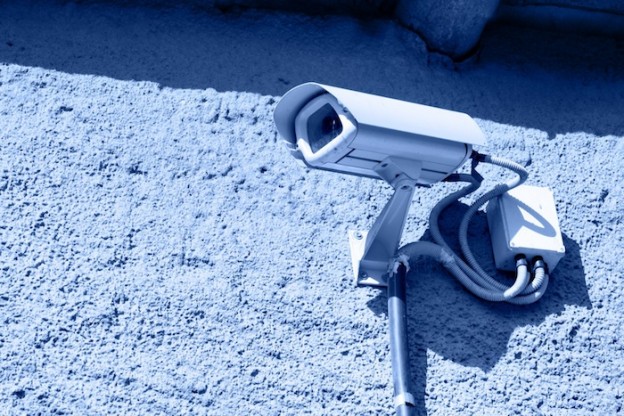As an audio forensic expert, one of my day-today activities is voice identification. There is a misunderstanding about voice identification that has confused our courts in the United States creating the perception that voice identification testing is not a reliable science. In the following article, I hope to clear up the misconception of voice identification testing as well as communicate some ‘outside the box’ testing techniques that have successfully solved cases where other forms of identification were not possible.
Our court system is full of digital audio recordings that are evidence in criminal proceedings as well as civil litigation. As an audio forensic expert, I have testified in many cases in the United States and worked on cases around the world that involve voice identification. Voice identification is a viable science that involves both science and art. By art I mean discretion of the audio forensic expert to use ‘outside the box’ investigation techniques to help move along due process.
Some of the time my ‘outside the box’ voice identification testing is a matter of life and death. When a company receives a threatening voice mail recording and has an idea of who made that recording, they will call an audio forensic expert like myself and ask for our third party, unbiased opinion. Because I have no stake in the outcome, I can proceed with the untraditional testing in order to deliver my opinion of the probability of the suspect being the one who left the threatening voice mail message.
This serves two purposes. First it helps the organization know that professionals are looking into the origin of the threatening voice mail message. This is comforting to employees especially the employee who received the voice mail message. Secondly, it helps with the conviction process. In other words, when I deliver an opinion, I use a percentage of probability in my initial verbal report. The organization then takes that professional test result to the accused and some of the time they admit or confess and other times they agree or consent to cooperating with the investigative team to create an exact exemplar for more in-depth voice identification testing.
The starting point for any voice identification test is to be able to clearly hear the voice in question that is to be identified. Part of this initial process is to remove any background noise in the audio recording that is unnecessary and distracting to the expert’s sound perception. This noise removal is a process like peeling an onion. The goal for the audio forensic expert is to create custom filtering that increases the volume of the voice in question and remove any unnecessary background noise. This noise reduction filtering process is done a step-by-step, incrementally fashion.. In other words, part of the background noise is removed then the volume of the voice in question is increased. This step-by-step process is the discretion of the voice identification expert. The reason why the expert makes decisions one at a time is because every recording is different.
When conducting a voice identification test, an audio forensic expert looks for spectrums that match the recording in question against the exemplar. An exemplar is a comparison recording that a forensic expert creates of the voice in question for comparison purposes. Even more important are the words themselves. The way the words are pronounced, the pacing of the words pronounced, the space between the words, the articulation of the words and the idiolect of the speaking word delivery style—all are indicia of a voice.
No two human voices are the same ,just like no two fingerprints are the same. Regardless of attempted voice disguise cover up, a trained forensic expert can identify a voice and compare to another to determine identification.
With experience, a trained audio forensic expert can use voice identification skills in a variety of ways and help uncover the truth behind audio recordings.
For example, in the case of the ‘who cried for help’ question around the Trayvon Martin killing in People V. George Zimmerman, there are only screams, not words that an audio forensic expert can compare and identify to the best of their ability. I have formed an opinion about who I believe cried for help before Trayvon Martin was killed by George Zimmerman and have written several blog posts about my opinion. I have also appeared on national television discussing my process and opinions. This is ‘outside the box’ voice identification testing. Is it reliable? In my humble opinion the answer is yes.
Regardless of the type of voice identification testing, the second step, once the recording is as clear as possible, is to create a comparison file that includes back-to-back samples of speech from the accused (exemplar) as well as the evidence or threatening recording. I did this in the case of George Zimmerman before I formed my opinion. Using the example of the threatening voice mail message, each telephone message included two voices. The goal is to determine what percentage of possibility that both voices came from the same person.
During the investigation, I separate the voices – the suspect and the evidence – and create a new audio file called ‘comparison’. That way I can critically listen to all voices back to back in order to determine if any of the voices were identical or at least had similar characteristics.
Once I complete this back-to-back assembly process, I create work notes listing all the similarities as well as differences observed during the critical listening phase of the voice identification testing.
These notes help me provide my opinion and create a report explaining my processes when the voice identification testing is complete.
I also use spectrum analysis and sonograms to help arrive at a conclusion with the identification process. Often I print out the display of these two electronic measurement devices and include these images in my report.
One thing I have learned over the 29+ years as an audio forensic expert: keep it simple. Judges and juries like an uncomplicated decision from a qualified forensic examiner. They become frustrated when they have to interpret new information they have never heard of or are not familiar with.
Voice identification is both an art and a science. As a voice identification expert, I use my talent, skill and ability in every case I am assigned to. The science is acceptable in court and the art is the ability to adapt every case to scientific standards.
http://www.youtube.com/watch?v=73tPKeKddfE






